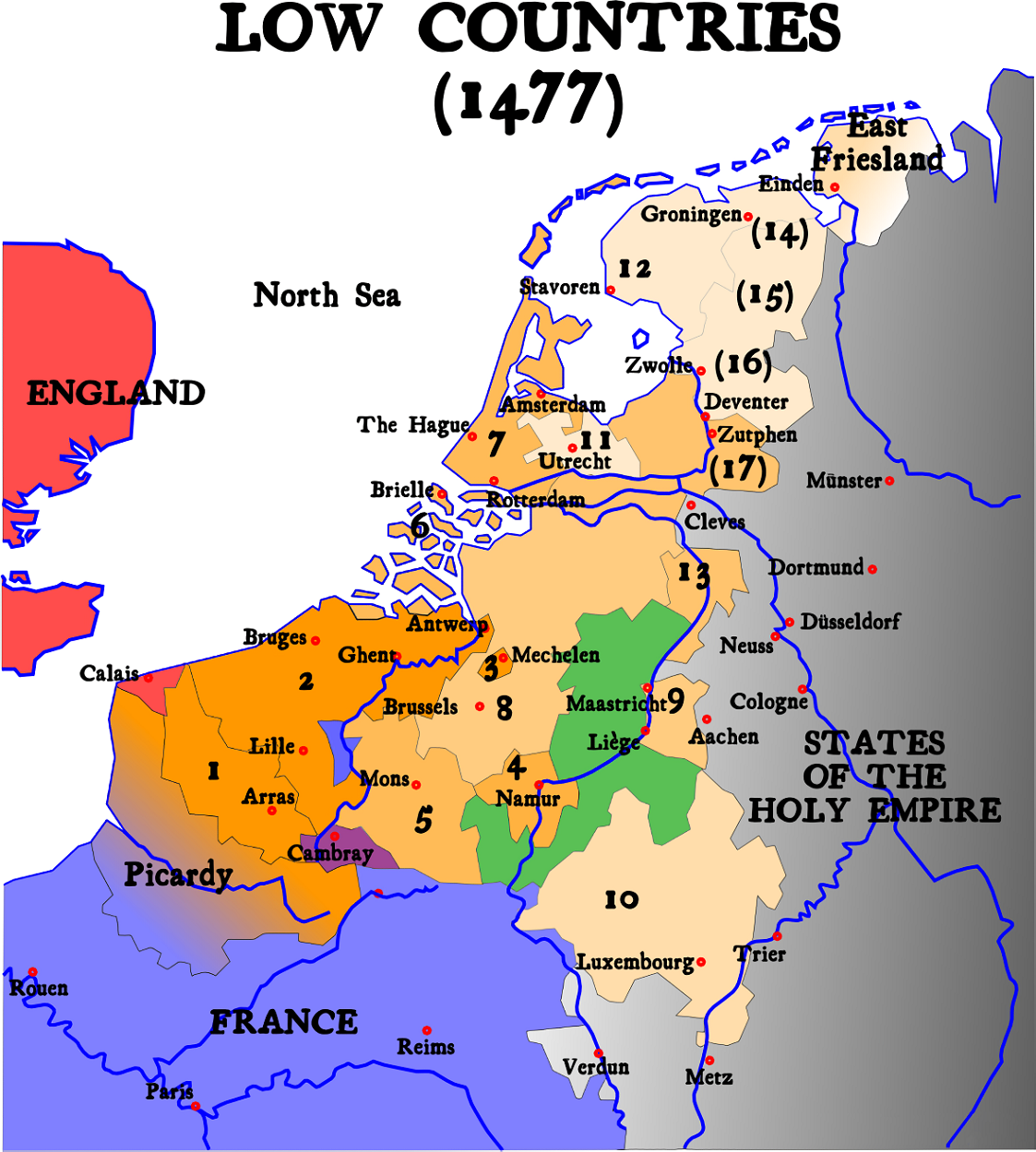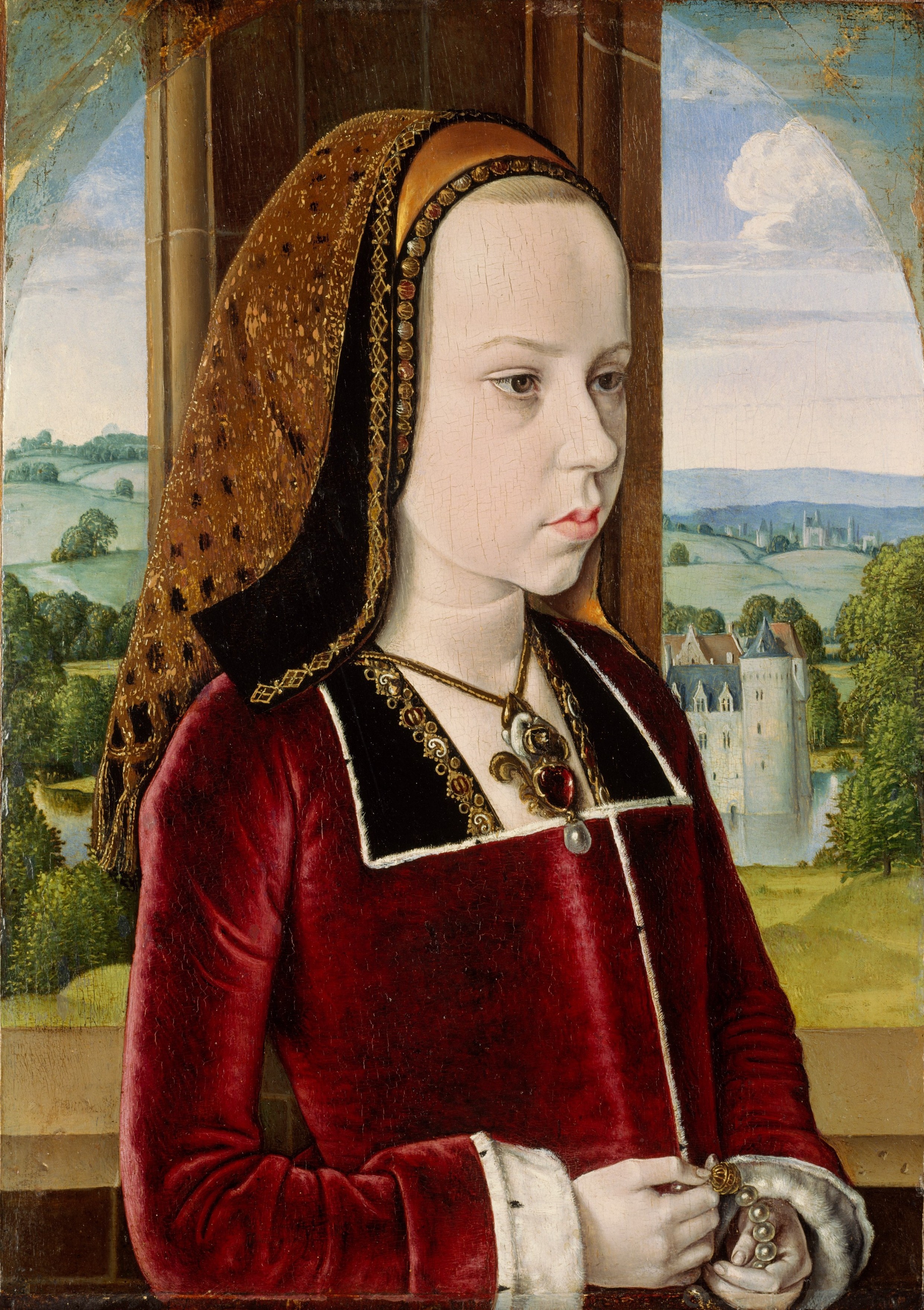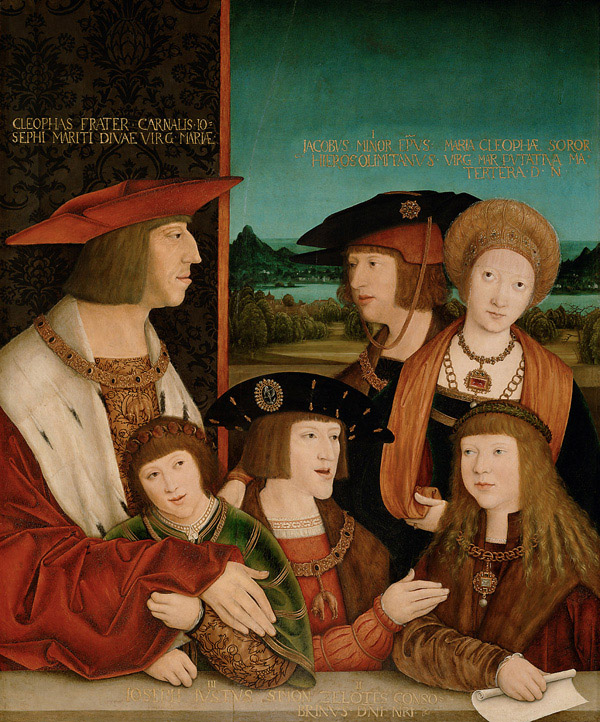|
Governor-general Of The Netherlands
The governor ( nl, landvoogd) or governor-general () of the Habsburg Netherlands was a representative appointed by the Holy Roman emperor (1504-1556), the king of Spain (1556-1598, 1621-1706), and the archduke of Austria (1716-1794), to administer the Burgundian inheritance of the House of Habsburg in the Low Countries when the monarch was absent from the territory. The role of the governor-generals significantly changed over time: initially tutors and advisors of Emperor Charles V, who lived at the Palace of Coudenberg, they served as generals during the 80 Years War between the Kingdom of Spain and the Dutch Republic. Frequently, the governor-general was a close relative of the Austrian or Spanish monarchs, though at other times Spanish or German noblemen filled the role. The governor-general was usually based in Brussels. List of governors {, width=80% class="wikitable" !Picture !Name !Took office !Left office !Relationship to monarch !Appointed by , - , align="center", , ... [...More Info...] [...Related Items...] OR: [Wikipedia] [Google] [Baidu] |
Habsburg Netherlands
Habsburg Netherlands was the Renaissance period fiefs in the Low Countries held by the Holy Roman Empire's House of Habsburg. The rule began in 1482, when the last House of Valois-Burgundy, Valois-Burgundy ruler of the Netherlands, Mary of Burgundy, Mary, wife of Maximilian I of Austria, died. Their grandson, Emperor Charles V, was born in the Habsburg Netherlands and made Brussels one of his capitals. Becoming known as the Seventeen Provinces in 1549, they were held by the Spanish branch of the Habsburgs from 1556, known as the Spanish Netherlands from that time on. In 1581, in the midst of the Dutch Revolt, the Seven United Provinces seceded from the rest of this territory to form the Dutch Republic. The remaining Spanish Southern Netherlands became the Austrian Netherlands in 1714, after Austrian acquisition under the Treaty of Rastatt. De facto Habsburg rule ended with the annexation by the revolutionary French First Republic in 1795. Austria, however, did not relinquish its ... [...More Info...] [...Related Items...] OR: [Wikipedia] [Google] [Baidu] |
Maximilian I, Holy Roman Emperor
Maximilian I (22 March 1459 – 12 January 1519) was King of the Romans from 1486 and Holy Roman Emperor from 1508 until his death. He was never crowned by the pope, as the journey to Rome was blocked by the Venetians. He proclaimed himself Elected Emperor in 1508 (Pope Julius II later recognized this) at Trent, thus breaking the long tradition of requiring a Papal coronation for the adoption of the Imperial title. Maximilian was the son of Frederick III, Holy Roman Emperor, and Eleanor of Portugal. Since his coronation as King of the Romans in 1486, he ran a double government, or ''Doppelregierung'' (with a separate court), with his father until Frederick's death in 1493. Maximilian expanded the influence of the House of Habsburg through war and his marriage in 1477 to Mary of Burgundy, the ruler of the Burgundian State, heir of Charles the Bold, though he also lost his family's original lands in today's Switzerland to the Swiss Confederacy. Through marriage of his son Phil ... [...More Info...] [...Related Items...] OR: [Wikipedia] [Google] [Baidu] |
Portrait Of Philip II Of Spain By Sofonisba Anguissola - 002b
A portrait is a painting, photograph, sculpture, or other artistic representation of a person, in which the face and its expressions are predominant. The intent is to display the likeness, personality, and even the mood of the person. For this reason, in photography a portrait is generally not a snapshot, but a composed image of a person in a still position. A portrait often shows a person looking directly at the painter or photographer, in order to most successfully engage the subject with the viewer. History Prehistorical portraiture Plastered human skulls were reconstructed human skulls that were made in the ancient Levant between 9000 and 6000 BC in the Pre-Pottery Neolithic B period. They represent some of the oldest forms of art in the Middle East and demonstrate that the prehistoric population took great care in burying their ancestors below their homes. The skulls denote some of the earliest sculptural examples of portraiture in the history of art. Historical portraitur ... [...More Info...] [...Related Items...] OR: [Wikipedia] [Google] [Baidu] |
Emmanuel Philibert, Duke Of Savoy
Emmanuel Philibert ( it, Emanuele Filiberto; pms, Emanuel Filibert; 8 July 1528 – 30 August 1580), known as ( pms, Testa 'd fer, links=no; "Ironhead", because of his military career), was Duke of Savoy from 1553 to 1580. He is remembered for the recovery of the Savoyard state (invaded and occupied by France when he was a child) following the Battle of St. Quentin (1557), and for moving its capital to Turin. Life Born in Chambéry, Emmanuel Philibert was the only child of Charles III, Duke of Savoy, and Beatrice of Portugal to reach adulthood. His mother was sister-in-law to Charles V, Holy Roman Emperor, and the future duke served in Charles's army during the war against Francis I of France, distinguishing himself by capturing Hesdin in July 1553. A month later, he became Duke of Savoy on the death of his father, but this was a nearly empty honour, as the vast majority of his hereditary lands had been occupied and administered by the French since 1536. Instead, he continued ... [...More Info...] [...Related Items...] OR: [Wikipedia] [Google] [Baidu] |
Emmanuel Philibert Of Savoy (1580)
Emmanuel Philibert of Savoy (Italian ''Emanuele Filiberto di Savoia''), a name shared by several members of the House of Savoy, may refer to: * Emmanuel Philibert, Duke of Savoy (1528–1580), a.k.a. "''Testa di Ferro''" ("Iron head"), sovereign of Savoy from 1553 to 1580 * Emmanuel Philibert of Savoy (1588–1624), Viceroy of Sicily, son of Charles Emmanuel I of Savoy * Emmanuel Philibert, Prince of Carignano (1628–1709) * Emmanuel Philibert of Carignano (1662–1676), Count of Dreux, son of Eugene Maurice, Count of Soissons * Prince Emanuele Filiberto, Duke of Aosta (1731–1735), son of Charles Emmanuel III * (1888–1933), of the Counts of Villafranca, a minor branch of the House of Savoy * Prince Emanuele Filiberto, Duke of Aosta (1869–1931), eldest son of Amadeo I of Spain, Italian general of World War I * Emanuele Filiberto of Savoy, Prince of Venice (born 1972), member of the House of Savoy Military Several military units were named after one of the above Savoy princ ... [...More Info...] [...Related Items...] OR: [Wikipedia] [Google] [Baidu] |
Mary Of Hungary (governor Of The Netherlands)
Mary of Austria (15 September 1505 – 18 October 1558), also known as Mary of Hungary, was queen of Hungary and Bohemia as the wife of King Louis II, and was later governor of the Habsburg Netherlands. The daughter of Queen Joanna and King Philip I of Castile, Mary married King Louis II of Hungary and Bohemia in 1515. Their marriage was happy but short and childless. Upon her husband's death following the Battle of Mohács in 1526, Queen Mary governed Hungary as regent in the name of the new king, her brother, Ferdinand I. Following the death of their aunt Margaret in 1530, Mary was asked by her eldest brother, Emperor Charles V, to assume the governance of the Netherlands and guardianship over their nieces, Dorothea and Christina of Denmark. As governor of the Netherlands, Mary faced riots and a difficult relationship with the Emperor. Throughout her tenure she continuously attempted to ensure peace between the Emperor and the King of France. Although she never enjoyed ... [...More Info...] [...Related Items...] OR: [Wikipedia] [Google] [Baidu] |
Mary (1505–1558), Queen Of Hungary
Mary may refer to: People * Mary (name), a feminine given name (includes a list of people with the name) Religious contexts * New Testament people named Mary, overview article linking to many of those below * Mary, mother of Jesus, also called the Blessed Virgin Mary * Mary Magdalene, devoted follower of Jesus * Mary of Bethany, follower of Jesus, considered by Western medieval tradition to be the same person as Mary Magdalene * Mary, mother of James * Mary of Clopas, follower of Jesus * Mary, mother of John Mark * Mary of Egypt, patron saint of penitents * Mary of Rome, a New Testament woman * Mary, mother of Zechariah and sister of Moses and Aaron; mostly known by the Hebrew name: Miriam * Mary the Jewess one of the reputed founders of alchemy, referred to by Zosimus. * Mary 2.0, Roman Catholic women's movement * Maryam (surah) "Mary", 19th surah (chapter) of the Qur'an Royalty * Mary, Countess of Blois (1200–1241), daughter of Walter of Avesnes and Margaret of Blois * ... [...More Info...] [...Related Items...] OR: [Wikipedia] [Google] [Baidu] |
Karl V
Charles V, french: Charles Quint, it, Carlo V, nl, Karel V, ca, Carles V, la, Carolus V (24 February 1500 – 21 September 1558) was Holy Roman Emperor and Archduke of Austria from 1519 to 1556, King of Spain ( Castile and Aragon) from 1516 to 1556, and Lord of the Netherlands as titular Duke of Burgundy from 1506 to 1555. He was heir to and then head of the rising House of Habsburg during the first half of the 16th century, his dominions in Europe included the Holy Roman Empire, extending from Germany to northern Italy with direct rule over the Austrian hereditary lands and the Burgundian Low Countries, and Spain with its southern Italian possessions of Naples, Sicily, and Sardinia. He oversaw both the continuation of the long-lasting Spanish colonization of the Americas and the short-lived German colonization of the Americas. The personal union of the European and American territories of Charles V was the first collection of realms labelled "the empire on which the ... [...More Info...] [...Related Items...] OR: [Wikipedia] [Google] [Baidu] |
Margaret Of Austria, Duchess Of Savoy
Archduchess Margaret of Austria (german: Margarete; french: Marguerite; nl, Margaretha; es, Margarita; 10 January 1480 – 1 December 1530) was Governor of the Habsburg Netherlands from 1507 to 1515 and again from 1519 to 1530. She was the first of many female regents in the Netherlands. Childhood and life in France Margaret was born on 10 January 1480 and named after her stepgrandmother, Margaret of York. She was the second child and only daughter of Maximilian of Austria (future Holy Roman Emperor) and Mary of Burgundy, co-sovereigns of the Low Countries. In 1482, her mother died and her three-year-old brother Philip the Handsome succeeded her as sovereign of the Low Countries, with her father as his regent. The same year her mother died, King Louis XI of France signed the Treaty of Arras, whereby her father promised to give her hand in marriage to Louis' son, Dauphin Charles. The engagement took place in 1483. With Franche-Comté and Artois as her dowry, Margaret was ... [...More Info...] [...Related Items...] OR: [Wikipedia] [Google] [Baidu] |
Bernard Van Orley - Portrait Of Margareta Van Oostenrijk - WGA16689
Bernard (''Bernhard'') is a French and West Germanic masculine given name. It is also a surname. The name is attested from at least the 9th century. West Germanic ''Bernhard'' is composed from the two elements ''bern'' "bear" and ''hard'' "brave, hardy". Its native Old English reflex was ''Beornheard'', which was replaced by the French form ''Bernard'' that was brought to England after the Norman Conquest. The name ''Bernhard'' was notably popular among Old Frisian speakers. Its wider use was popularized due to Saint Bernhard of Clairvaux (canonized in 1174). Bernard is the second most common surname in France. Geographical distribution As of 2014, 42.2% of all known bearers of the surname ''Bernard'' were residents of France (frequency 1:392), 12.5% of the United States (1:7,203), 7.0% of Haiti (1:382), 6.6% of Tanzania (1:1,961), 4.8% of Canada (1:1,896), 3.6% of Nigeria (1:12,221), 2.7% of Burundi (1:894), 1.9% of Belgium (1:1,500), 1.6% of Rwanda (1:1,745), 1.2% of Germany ( ... [...More Info...] [...Related Items...] OR: [Wikipedia] [Google] [Baidu] |
Charles V, Holy Roman Emperor
Charles V, french: Charles Quint, it, Carlo V, nl, Karel V, ca, Carles V, la, Carolus V (24 February 1500 – 21 September 1558) was Holy Roman Emperor and Archduke of Austria from 1519 to 1556, King of Spain (Crown of Castile, Castile and Crown of Aragon, Aragon) from 1516 to 1556, and Lord of the Netherlands as titular Duke of Burgundy from 1506 to 1555. He was heir to and then head of the rising House of Habsburg during the first half of the 16th century, his dominions in Europe included the Holy Roman Empire, extending from Kingdom of Germany, Germany to Kingdom of Italy (Holy Roman Empire), northern Italy with direct rule over the Austrian hereditary lands and the Burgundian Low Countries, and Habsburg Spain, Spain with its southern Italy, southern Italian possessions of Kingdom of Naples, Naples, Kingdom of Sicily, Sicily, and Kingdom of Sardinia, Sardinia. He oversaw both the continuation of the long-lasting Spanish colonization of the Americas and the short-live ... [...More Info...] [...Related Items...] OR: [Wikipedia] [Google] [Baidu] |
Titian - Portrait Of Charles V Seated - WGA22964
Tiziano Vecelli or Vecellio (; 27 August 1576), known in English as Titian ( ), was an Italian ( Venetian) painter of the Renaissance, considered the most important member of the 16th-century Venetian school. He was born in Pieve di Cadore, near Belluno. During his lifetime he was often called ''da Cadore'', 'from Cadore', taken from his native region. Recognized by his contemporaries as "The Sun Amidst Small Stars" (recalling the final line of Dante's '' Paradiso''), Titian was one of the most versatile of Italian painters, equally adept with portraits, landscape backgrounds, and mythological and religious subjects. His painting methods, particularly in the application and use of colour, exercised a profound influence not only on painters of the late Italian Renaissance, but on future generations of Western artists. His career was successful from the start, and he became sought after by patrons, initially from Venice and its possessions, then joined by the north Italian prin ... [...More Info...] [...Related Items...] OR: [Wikipedia] [Google] [Baidu] |






